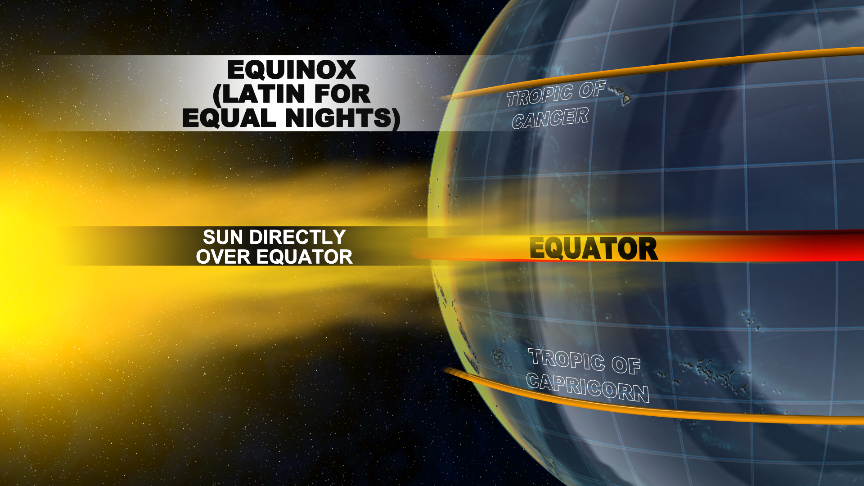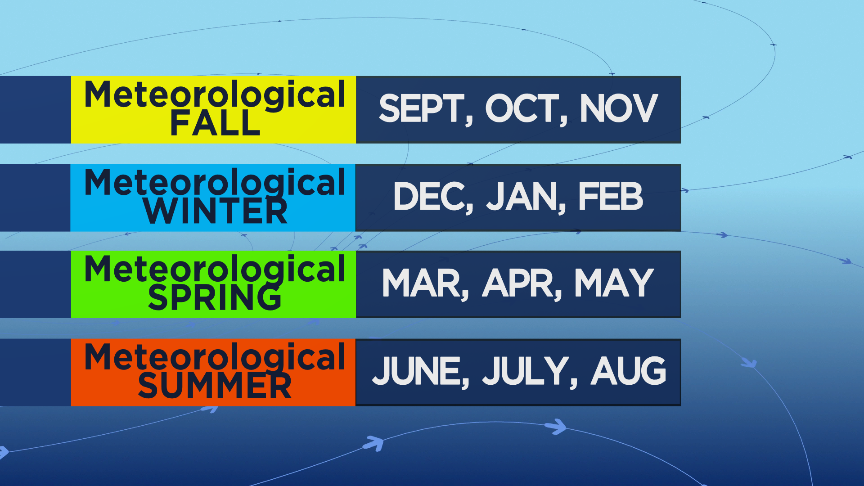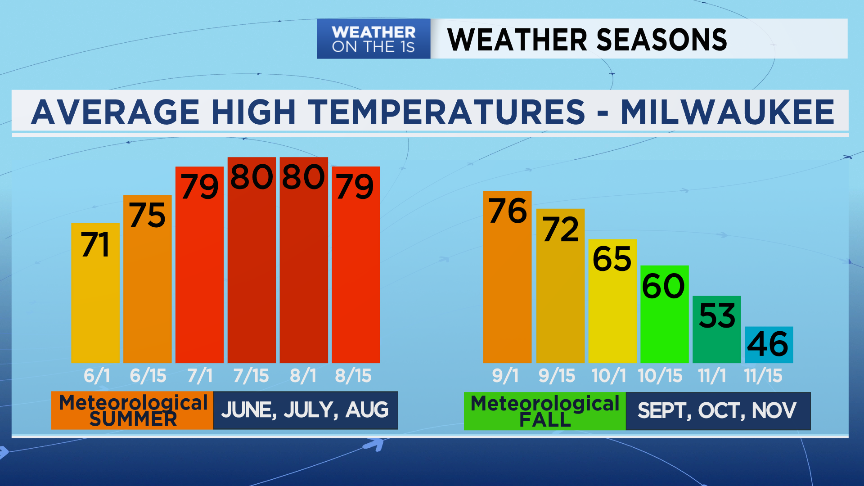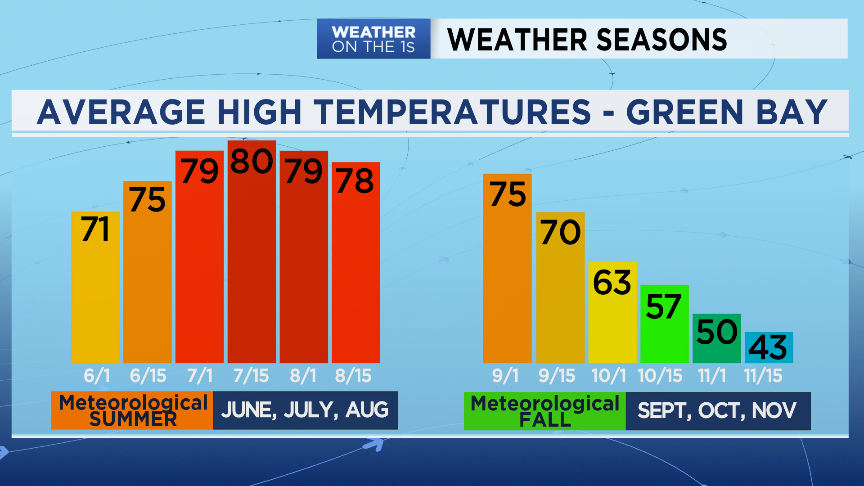When it comes to talking about the seasons, things can get a little confusing in the meteorological world. Let's find out why.
Watch the local news and you may hear the meteorologist talk about fall starting on Sept. 1. But then you look at a calendar and see that fall starts on Sept. 22.
So when does fall actually start? That depends on how you look at it.
Growing up, we learned about things like the Fall Equinox (which means "equal night" in Latin). The Fall Equinox usually happens around the third week of September, the date changes a little each year.
This traditionally marks the start of fall as the sun is directly over the equator.

Moving forward, the Earth continues to tilt away from the Sun. This leads to less sunlight and shorter days.
Think of it like boiling water on the stove. If you turn down the heat, the water (obviously) can't get as hot. Same idea here: with less daylight and a lower sun angle, we cannot warm up the Northern Hemisphere as much.
Thus, we enter the season of fall (or autumn, as some say) across the U.S. as our high temperatures start to, well, fall!
As scientists, meteorologists love numbers. Pretty much everything we do involves numbers!
So, it makes sense that we also divide up the seasons based on numbers and record keeping.
Twelve months in a year and four seasons in a year. That makes it easy to say that each "season" lasts three months. Thus, meteorologists divide it up like this:

It also means each season begins on the same date every year, which is very helpful for keeping track of records.
As you can see, average high temperatures rapidly start to fall around the first of September.

Farther north in the state, it's a little more dramatic as we move through September and October.

Remember that averages are just that: an average of extremes. This is why we can still have hot days (in the 90s) during the fall. We can also have very cold days in the fall (think about those November days where it's only 40-some degrees!).
In addition to temperatures, dividing up the seasons into three-month groups helps with precipitation records. Here again, it all comes back to keeping track of the data.
No matter how you want to slice up the month of September, the end result is the same: we are just one step closer to winter! The summers always go by so fast in Wisconsin.



